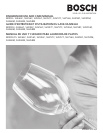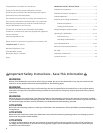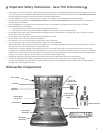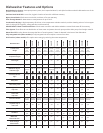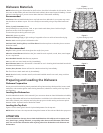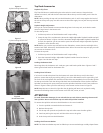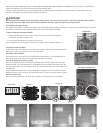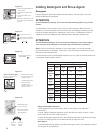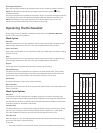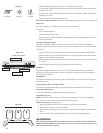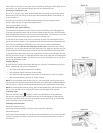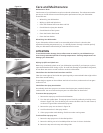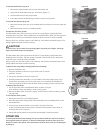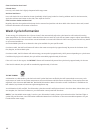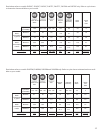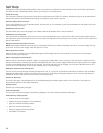
7
Dishware Materials
NOTE: Before using your dishwasher for the rst time, check the information in this section. Some
items are not dishwasher safe and should be hand-washed; others require special loading. Contact
the item’s manufacturer if you are unsure about the item’s dishwasher suitability.
Recommended
Aluminum: Colored anodized aluminum may fade over time. Minerals in your water may cause
the aluminum to darken or spot. This can usually be removed by using a soap-lled steel wool
pad.
China, Crystal, Stoneware: Some
hand-painted pieces may discolor, fade, or spot. Hand-wash these pieces. Position fragile
glassware so that it will not topple over or
contact other pieces during the wash cycle.
Glass: Milk glass may yellow.
Non-Stick Coatings: Apply a light coating of vegetable oil to non-stick surfaces after drying.
Plastics: Make sure the piece is dishwasher safe.
Stainless Steel, Sterling Silver, and Silver Plate: Place these pieces so that they do not contact
dissimilar metals.
Not Recommended
Acrylic: Crazing (small cracks throughout the acrylic) may occur.
Adhesive-Joined Pieces: Adhesives that join materials such as plastic, wood, bone, steel copper,
tin, etc. may loosen.
Bone-Handled Utensils: Handles may separate.
Iron: Iron will rust. Hand-wash and dry immediately.
Non-Dishware Items: Your dishwasher is intended for use in cleaning ONLY standard household
dishware and kitchenware.
Pewter, Brass, Bronze: Pewter will tarnish. Hand-wash and dry immediately.
Tin: Tin will rust. Hand-wash and dry immediately.
Wood: Wooden bowls, wooden utensils, and wood-handled utensils can crack, warp, and lose
their nish.
Preparing and Loading the Dishware
Dishware Preparation
Do not pre-wash items having loosely-attached soiling. Remove large food particles, bones, seeds,
toothpicks, and excessive grease. Items having burned-on, baked-on or starchy soils may require
pre-treatment.
Loading the Dishwasher
Check the Materials section of this manual if you are unsure about an item’s dishwasher suitability.
Load only dishwasher-safe items into the dishwasher. Load dishes in the dishwasher racks so that
the insides of bowls, pots, and pans are facing the spray arms. Avoid nesting and contact points
between dishes. Separate items of dissimilar metals.
Loading the Top Rack
Figures 1 and 2 show typical 10 and 12 place load patterns for the top rack.
NOTE: Make sure items do not protrude through the bottom of the racks and block the spray arms.
ATTENTION
To avoid dishwasher damage, do not load the dishwasher with objects such as paper prod-
ucts, plastic bags, packing materials, or anything other than normal dishware and kitchen-
ware. Do not load the dishwasher with anything other than dishwasher-safe dishware and
kitchenware.
Figure 1
Figure 2
Figure 4
Figure 5
Figure 3
12 place setting top rack
10 place setting top rack



